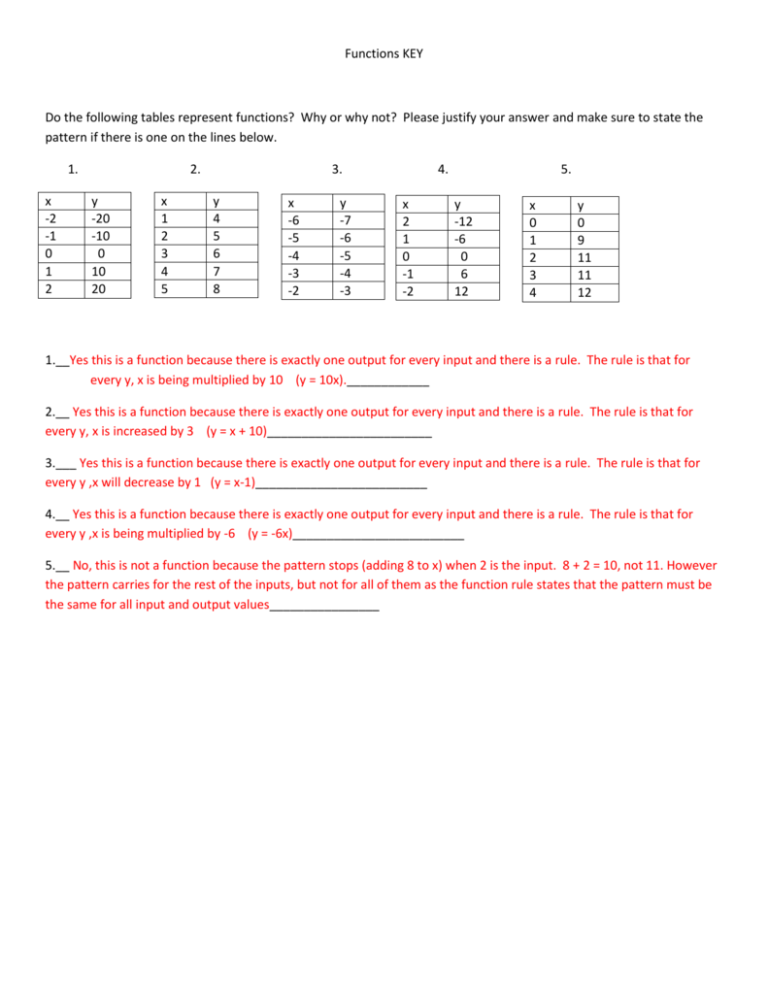Function Identification Worksheet Key
advertisement

Functions KEY Do the following tables represent functions? Why or why not? Please justify your answer and make sure to state the pattern if there is one on the lines below. 1. x -2 -1 0 1 2 2. y -20 -10 0 10 20 x 1 2 3 4 5 3. y 4 5 6 7 8 x -6 -5 -4 -3 -2 y -7 -6 -5 -4 -3 4. x 2 1 0 -1 -2 5. y -12 -6 0 6 12 x 0 1 2 3 4 y 0 9 11 11 12 1.__Yes this is a function because there is exactly one output for every input and there is a rule. The rule is that for every y, x is being multiplied by 10 (y = 10x).____________ 2.__ Yes this is a function because there is exactly one output for every input and there is a rule. The rule is that for every y, x is increased by 3 (y = x + 10)________________________ 3.___ Yes this is a function because there is exactly one output for every input and there is a rule. The rule is that for every y ,x will decrease by 1 (y = x-1)_________________________ 4.__ Yes this is a function because there is exactly one output for every input and there is a rule. The rule is that for every y ,x is being multiplied by -6 (y = -6x)_________________________ 5.__ No, this is not a function because the pattern stops (adding 8 to x) when 2 is the input. 8 + 2 = 10, not 11. However the pattern carries for the rest of the inputs, but not for all of them as the function rule states that the pattern must be the same for all input and output values________________ Now, create 3 of your own input/output tables with coordinate pairs that will represent a function and state the pattern. Then create 1 input/output table that is NOT a function. Once complete, transfer your coordinate pairs to the graphs below. Be sure to label the x and y axis and conduct your vertical line test on the graph. Remember to number your problems. Student answers will vary. 6. 7. 10 9 8 7 6 5 4 3 2 1 0 8. 10 9 8 7 6 5 4 3 2 1 0 0 1 2 3 4 5 6 7 8 9 10 10 9 8 7 6 5 4 3 2 1 0 0 1 2 3 4 5 6 7 8 9 10 10 9 8 7 6 5 4 3 2 1 0 0 1 2 3 4 5 6 7 8 9 10 0 1 2 3 4 5 6 7 8 9 10 9.











